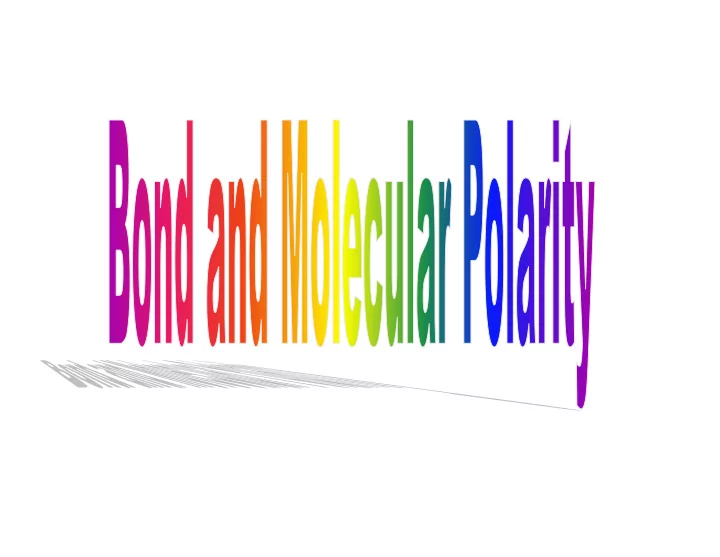

Electronegativity is defined as the elements attraction for electrons and is based on a scale of 0-4, just like a GPA.An element with a 4.0 has a great attraction for electrons while an atom with a 0.7 would have little attraction for electrons. The difference in electronegativity between two elements determines what type of bond will form.
Ionic Bonds As a metal and a non-metal approach one another, the valence electrons interact and the metal (indicated by the red sphere) transfers its valence electrons to the non-metal (indicated by the blue sphere). This type of bond must have a difference of greater than 1.7 in electronegativity. Non-metal forming Anion Metal forming Cation
Ionic Bond Forming Non-metal forming Anion Metal forming Cation The metal becomes positively charged (through the loss of electrons) and the non- metal becomes negatively charged (through the gain of electrons). In this way, both the metal and the non-metal complete their valence shell to obtain a stable electron configuration.
If an electron is transferred and forms a negative ion, the electron configuration can be shown the same as that of the original atom except that it will have more or less electrons. Example - 1s 2 2s 2 2p 6 3s 2 3p 5 Cl Cl -1 - 1s 2 2s 2 2p 6 3s 2 3p 6
There are two types of covalent bonds. In a non-polar covalent bond the electrons are shared equally between the two atoms. (The nuclei and core electrons are indicated by the blue spheres and the bonding electrons are indicated by the lavender dots.) The difference in electronegativity determines which type of bond will form. If the dif. is 0, then the bond is nonpolar covalent.
As two non-metals approach one another, the valence electrons interact and a nonpolar covalent bond is formed between the two non-metals which share a pair of electrons so that each obtains a filled valence shell. Non-metal Non-metal
The electrons move around the nuclei with the electrons generating temporary positive and negative charges within the molecule. Nonpolar covalent bond
In a polar covalent bond the electrons are shared unequally between the two atoms. In this situation, one atom has a greater ability to pull the bonding electrons towards it and is said to be more electronegative . (The green sphere represents the more electronegative element.) polar covalent bond
Again, the electrons move around the nuclei with the electrons spending the majority of the time near the more electronegative element. This generates a partial negative charge near the more electronegative element and a partial positive charge near the less electronegative element. This is called a dipole moment. δ - charge δ + charge
Dipole Moment δ - charge δ + charge The arrow on a dipole points to the negative end of the bond.
Molecules that are not linear will still have a dipole moment. δ - charge H O H δ + charge Non linear molecule water/H 2 O
Summary of Bond Types Ionic Polar Nonpolar Covalent Covalent Electronegativity Greater than Less than 0 Difference 1.7 1.7 Type of atoms metal and 2 2 of the same that form this nonmetal nonmetals element. bond Both nonmetals
Recommend
More recommend